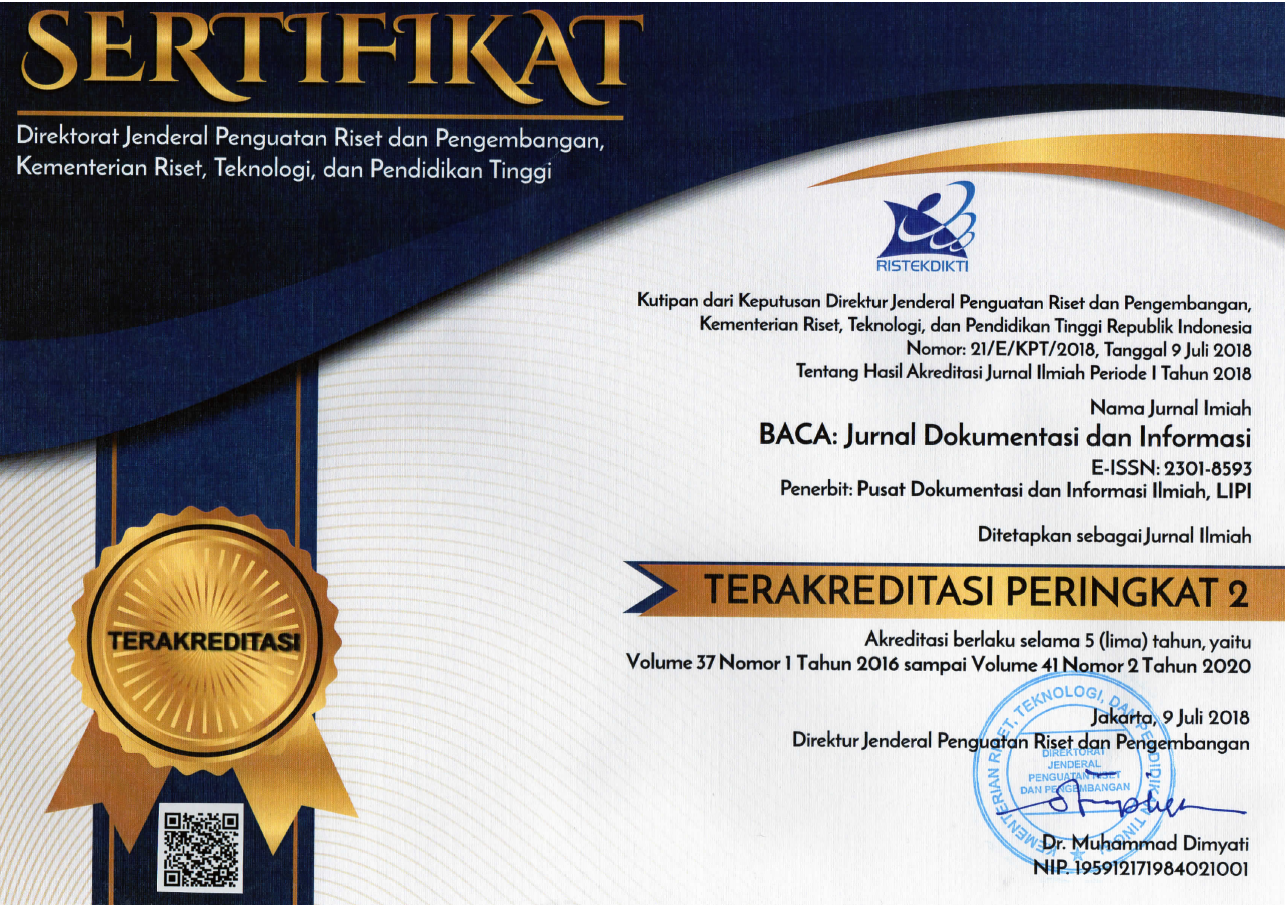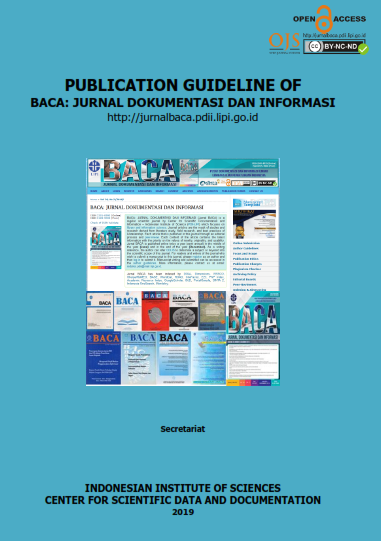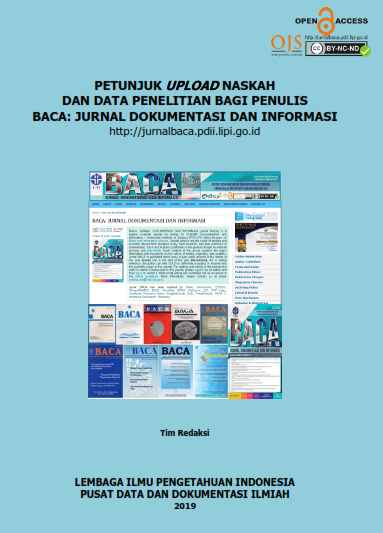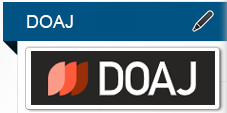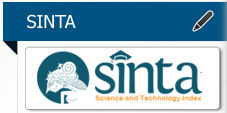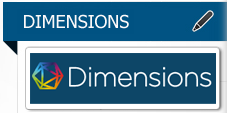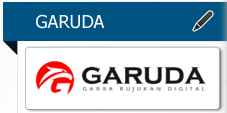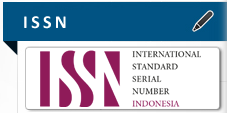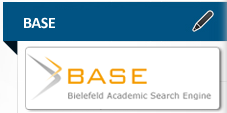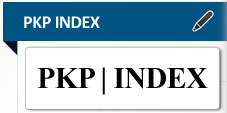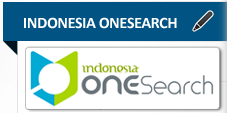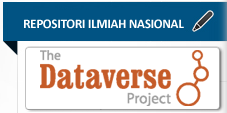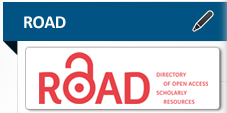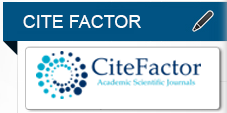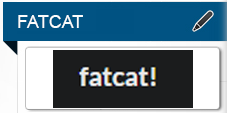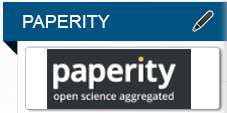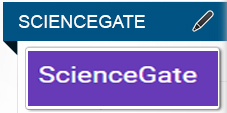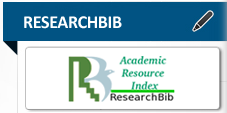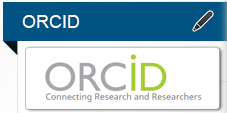ANALISIS KUALITAS DAN FASILITAS SWAARSIP WEB REPOSITORI INSTITUSI LEMBAGA PENELITIAN: PERBANDINGAN LIPI DAN LEMBAGA INTERNASIONAL
Abstract
Many research organization have been developing institutional repositories (IRs) to increase their researches impact, but in Indonesia there is only one research organization’s IR i.e. Indonesian Institute of Sciences (Lembaga Ilmu Pengetahuan Indonesia/LIPI) Institutional Repository. Therefore, the study of this IRs is very important to encourage research organizations to develop their IRs. This study analyzed the quality and self-archiving facilities of LIPI and world best IRs website based on Webometrics ranking. The method used web analysis on content, features and policies. The result showed that best quality IRs has a mandatory regulations to deposit researcher’s scientific work as well as a clear policy on the type of content, copyrights, and access. These IRs also provide informative features and services to supporting researcher’s self-archiving as well as facilitating public to access the web.
Keywords
Full Text:
PDFReferences
Bawden, D. & Robinson, L. 2012. Introduction to Information Science. London: Facet Publishing.
Cassella, M. 2010. “Institutional Repositories: an Internal and External Perspective on the Value of Irs for Researchers’ Communities”. LIBER Quarterly, 20(2): 1–11.
Cheng, W. & Ren, S. 2008. “Evolution of Open Access Publishing in Chinese Scientific Journals”. Learned Publishing, 21(2): 140–152. http://www.scopus.com/inward/record.url?eid=2-s2.043749089580&partnerID=40&md5 =b65c362e2dcccd014b302cfb67b58447.
Cullen, R. & Chawner, B. 2011. “Institutional Repositories, Open Access, and Scholarly Communication: A Study of Conflicting Paradigms”. The Journal of Academic Librarianship, 37(6), 460–470. doi:http://dx.doi.org/10.1016/j.acalib.2011.07.002.
DeMaria, A. N. 2004. “Open Access, Open Archives, and Enhanced Public Access to National Institutes of Health Research”. Journal of the American College of Cardiology, 44(12): 24062407.
Dobratz, S. & Scholze, F. 2006. “DINI Institutional Repository Certification and Beyond”. Library Hi Tech, 24(4): 583–594. doi:10.1108/07378830610715446.
Hasugian, J. 2012. “Internal Repository pada Perguruan Tinggi”. (http://repository.usu.ac.id/bitstream/123456789/39750/1/Repositori Institusi Perguruan Tinggi.pdf., diakses 21 Juli 2014).
Jantz, R. C. & Wilson, M. C. 2008. “Institutional Repositories: Faculty Deposits, Marketing, and The Reform of Scholarly Communication”. The Journal of Academic Librarianship, 34(3): 186–195. doi:http://dx.doi.org/10.1016/j.acalib.2008.03.014.
Johnson, R. 2002. “Institutional Repositories: Partnering with Faculty to Enhance Scholarly Communication”. D-Lib Magazine, 8(11): 1–6. (http://eprints.rclis.org/8307/1/SPARC_IR_DLib_10-28-02preprint.pdf., diakses 21 Juli 2014)
Kim, J. 2011. “Motivations of Faculty Self-Archiving in Institutional Repositories”. The Journal of Academic Librarianship, 37(3): 246–254. doi:http://dx.doi.org/10.1016/j.acalib.2011.02.017.
Krishnamurthy, M. & Kemparaju, T. D. 2011. “Institutional Repositories in Indian Universities and Research Institutes: A study”. Program: Electronic Library and Information Systems, 45(2), 185–198. doi:10.1108/00330331111129723.
Mercer, H., Koenig, J., McGeachin, R. B. & Tucker, S. L. 2011. “Structure, Features, and Faculty Content in ARL Member Repositories”. The Journal of Academic Librarianship, 37(4): 333 - 342. doi:http://dx.doi.org/10.1016/j.acalib.2011.04.008.
Mondoux, J. & Shiri, A. 2009. “Institutional Repositories in Canadian Post-Secondary Institutions: User Interface Features and Knowledge Organization Systems”. Aslib Proceedings, 61(5): 436 - 458. doi:10.1108/00012530910989607.
Pinfield, S. 2004. “A Mandate to Self Archive? The Role of Open Access Institutional Repositories”. In UKSG Seminar “Scientific Publications: Free for All?” (pp. 42–48). London: The Geological Society. (http://eprints.nottingham.ac.uk/archive/00000152/, diakses 1 November 2014).
Sánchez-Martín, F. M., Rodríguez, F. M. & Mavrich, H. V. 2009. “The Open Access Initiative (OAI) in The Scientific Literature”. La Iniciativa Open Access (OAI) En La Literatura Científica, 33(7): 732–740.
Sawant, S. 2012. “Indian Institutional Repositories: a Study of User’s Perspective. Program: Electronic Library and Information Systems, 46(1): 92–122. doi:10.1108/00330331211204584.
Shearer, K. 2006. “The CARL Institutional Repositories Project: A Collaborative Approach to Addressing The Challenges of IRs in Canada”. Library Hi Tech, 24(2): 165–172. doi:10.1108/ 07378830610669547.
Šilhánek, J. 2011. “Revolution in Scientific Publishing? Getting on with Open Access”. Chystá Se Skuteènì Revoluce ve Vìdeckém Publikování, Aneb Jak Pokraèuje “Open Acces”?, 105(1): 69–71.
Silobrèiæ, V. 2004. “Open Access to Scientific Information - aPossible Future for Informing Scientists”. Slobodan Pristup Znanstvenim Informacijama - Moguæa Budúcnost Objavljivanja Znanstvenih Otkriæa, 53(10): 472–476.
Singeh, F. W., Abrizah, A. & Karim, N. H. A. 2013. “Malaysian Authors’ Acceptance to SelfArchive in Institutional Repositories: Towards a Unified View”. Electronic Library, 31(2): 188–207. Suber, P. 2005. Open Access, Impact, and Demand. BMJ (Clinical Research Ed.), 330(7500): 1097–1098. doi:10.1136/bmj.330.7500.1097.
Swan, A. 2012. Membangun dan Meningkatkan Akses Terbuka: Pedoman untuk Pembuat Kebijakan.Terjemahan Policy Guidelines for The Development and Promotion of Open Access, Agus Permadi. 2013. Jakarta: Pusat Dokumentasi dan Informasi Ilmiah - LIPI.
The Organisation for Economic Co-operation and Development (OECD). 1998. Actor Brief on Public Research Organizations (PROs ). (http://www.oecd.org/innovation/policyplatform/48136051.pdf., diakses 12 Juli 2014).
Thelwall, M. 2009. Introduction to Webometrics: Quantitative Web Research for the Social Sciences. Chapel Hill (USA): Morgan & Claypool Publishers series.
Thomson Reuters. 2010. BiBliometric Handbook: Accelerating Discovery Advancing Knowledge (p. 8). Philadelphia: Thomson Reuters.
Tmava, A. M. & Alemneh, D. G. 2013. “Enhancing Content Visibility in Institutional Repositories: Overview of Factors that Affect Digital Resources Discoverability. In iConference 2013 Proceedings (pp. 855–859). Illinois (USA): iSchool. doi:10.9776/13437.
Trayhurn, P. 2002. “The Public Library of Science and Open Access to The Scientific Literature”. British Journal of Nutrition, 87(1): 1–2.
Tripathi, M. & Jeevan, V. K. J. 2011. “An Evaluation of Digital Libraries and Institutional Repositories in India”. The Journal of Academic Librarianship, 37(6): 543–545. doi:http://dx.doi.org/10.1016/j.acalib.2011.08.012.
Veiga de Cabo, J. & Martín-Rodero, H. 2011. “Open Access: New Models of Scientific Publishing in Web2.0 Environments”. Acceso Abierto: Nuevos Modelos de Edición Científica En Entornos Web 2.0, 7(SUPPL): 19–27.
Xia, J. 2007. “Assessment of Self-Archiving in Institutional Repositories: Across Disciplines”. The Journal of Academic Librarianship, 33(6): 647–654.doi:http://dx.doi.org/10.1016/j.acalib.2007.09.020.
Xia, J. 2008. “A Comparison of Subject and Institutional Repositories in Self-Archiving Practices”. The Journal of Academic Librarianship, 34(6): 489–495. doi:http://dx.doi.org/10.1016/j.acalib.2008.09.016.
Xia, J.& Sun, L. 2007. “Assessment of Self-Archiving in Institutional Repositories: Depositorship and Full-Text Availability”. Serials Review, 33(1) 14–21. doi:http://dx.doi.org/10.1016/j.serrev.2006.12.003.
DOI: https://doi.org/10.14203/j.baca.v36i1.202
Copyright (c) 2016 JURNAL DOKUMENTASI DAN INFORMASI

This work is licensed under a Creative Commons Attribution-NonCommercial-NoDerivatives 4.0 International License.



